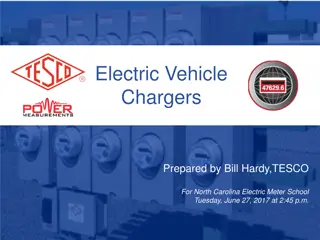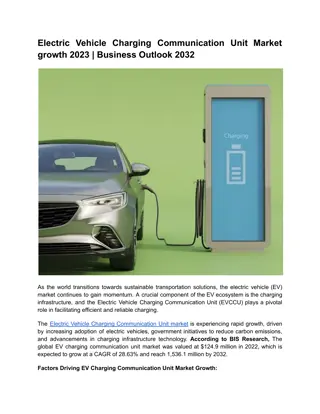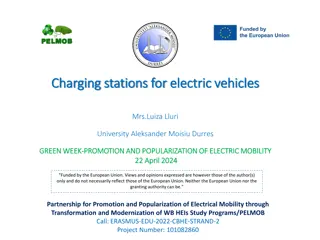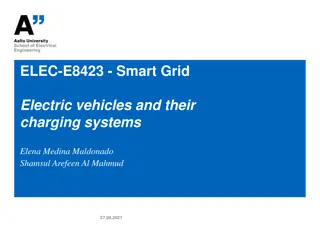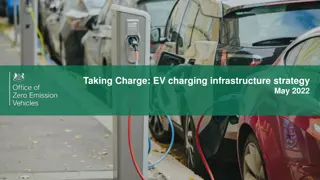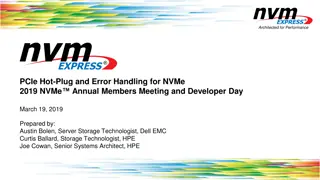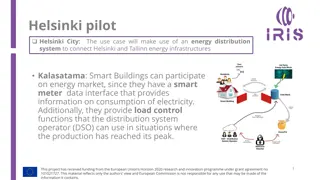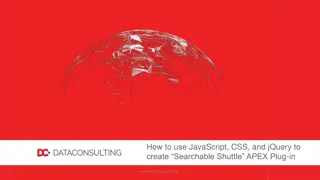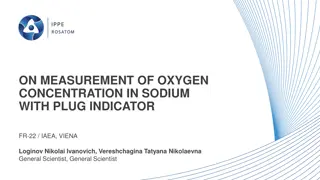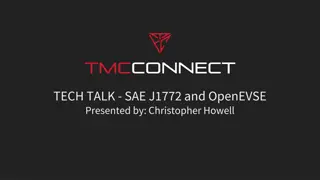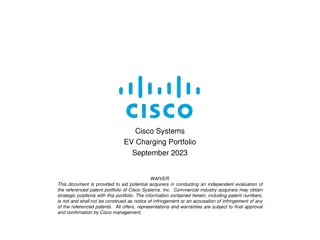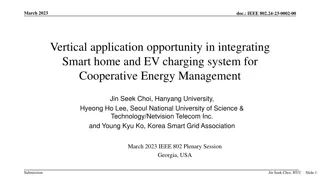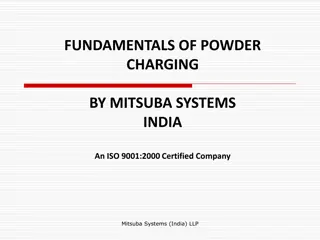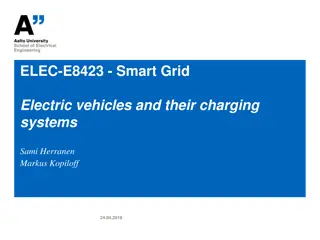SCE Plug-In Electric Smart Charging Pilot
"This document outlines the SCE Plug-In Electric Smart Charging Pilot conducted by SCE in 2013-2014. It details the pilot objectives, phases, smart charging architecture, findings, and recommendations for implementing SEP 2.0 as a new standard."
Download Presentation

Please find below an Image/Link to download the presentation.
The content on the website is provided AS IS for your information and personal use only. It may not be sold, licensed, or shared on other websites without obtaining consent from the author.If you encounter any issues during the download, it is possible that the publisher has removed the file from their server.
You are allowed to download the files provided on this website for personal or commercial use, subject to the condition that they are used lawfully. All files are the property of their respective owners.
The content on the website is provided AS IS for your information and personal use only. It may not be sold, licensed, or shared on other websites without obtaining consent from the author.
E N D
Presentation Transcript
SCE Plug-In Electric (PEV) Smart Charging Pilot DRMEC Meeting May 10-11, 2016 SCE Internal Use Only 1
PEV Smart Charging Pilot Background Approved by the California Public Utilities Commission and funded by ratepayers as part the SCE 2012-2014 Demand Response (DR) Application (A.11-03-003). Pilot Timeframe: June 2013 December 2014 Pilot Objectives: Evaluate and possibly recommend a variety of residential-based smart charging technologies that utilizes non-AMI communications, including the internet and standardized protocols Objectives are to sub-meter EV charging, provide real time demand and interval energy data, manage EV loads, and enable customer control (opt- in/opt-out functionality) Create a common set of requirements and technologies SCE can leverage for future EV or other load management pilots or programs SCE Internal Use Only 2
Pilot Phases Design Pilot design based on input from stakeholders RFI/RFP for technology solutions Procurement of equipment Lab Testing Commissioning, Registration and Enrollment Demand Response, Load Control and Price Signals Measurement and Monitoring Managed Charging Human Machine Interface Field Testing Eight pilot sites deployed Nine DR test events conducted SCE Internal Use Only 3
Smart Charging Architecture Two Communication Paths 1. Business to Business A 3rd Party, such as an electric vehicle manufacturer, received an OpenADR 2 DR signal from SCE The 3rd Party relayed the DR information via telematics directly to the electric vehicle or using other Electric Vehicle Service Provider (EVSP) communications to Electric Vehicle Supply Equipment (EVSE) Charging was throttled or curtailed by the electric vehicle or EVSE 2. Direct Utilized a prototype gateway device to receive a Smart Energy Profile (SEP) 2.0 DR signal from SCE The gateway maintained connections to a smart meter and EVSE DR signals communicated directly from SCE with EVSE to throttle or curtail charging SCE Internal Use Only 4
Smart Charging Architecture EVSP Communications SEP 2.0 ISO/IEC 15118 3rd Party Vehicle Telematics OpenADR2 Business to Business (B2B) Internet SEP 2.0 OpenADR2 SCE DRS SEP 2.0 Sub-meter Gateway SEP 2.0 ISO/IEC 15118 SEP 2.0 Network (Wi-Fi) Direct to Device Smart Charging Pilot Architecture- This diagram depicts the communication paths (Business to Business at the top and Direct at the bottom), protocols, and technologies deployed in the Smart Charging Pilot Demonstration. SCE Internal Use Only 5
Findings and Recommendations SEP 2.0 Implementation As a new standard utilizing prototype devices, no gaps or issues were discovered Demand Response Server/System (DRS) The cloud based DRS used during the pilot was a flexible and effective system Automated enrollment would be needed for a larger or production implementation Automated Discovery and Registration SEP 2.0 discovery and registration of devices connected to the gateway worked as expected DR Signal Types Load management events need to be carefully implemented since different equipment interpret DR signals differently SCE Internal Use Only 6
Findings and Recommendations Customer and DR Strategies Even with a small sample size, 22% of events experienced an opt-out This may point to more flexibility needed with EV load management programs Signal Speeds DR signalling usually required several minutes when relying on the Internet and several communication hops to reach the EV Based on this latency EV s may not be a good resource for real-time dispatch DR events SCE Internal Use Only 7
Next Steps Larger Pilots Larger pilots such as SCE s Workplace Charging Pilot will provide additional learnings regarding customer behavior and real world implementations New Charging Technology Exploration Explore DC fast charging and vehicle to grid options with EV s Sub-metering The Smart Charging Pilot utilized alternatives to traditional sub-metering that should be explored further SEP 2.0 Testing and Certification A strong testing and certification program will be needed if SEP 2.0 continues to be used Bring Your Own Device Options Explore options for utilizing more customer purchased devices for DR SCE Internal Use Only 8
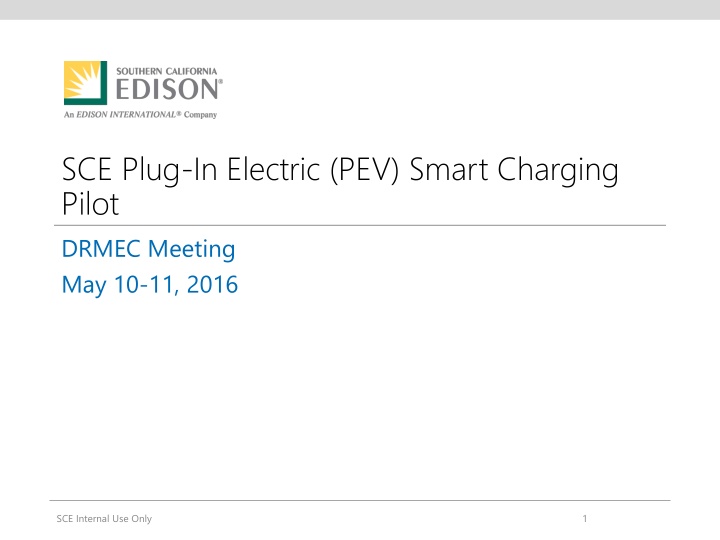

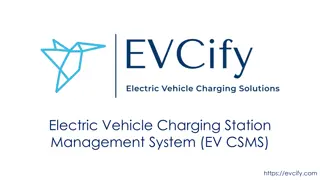



![Long-Range Wireless Charging Market Report & Analysis _ BIS Research [2024-2035]](/thumb/87166/long-range-wireless-charging-market-report-analysis-bis-research-2024-2035.jpg)
